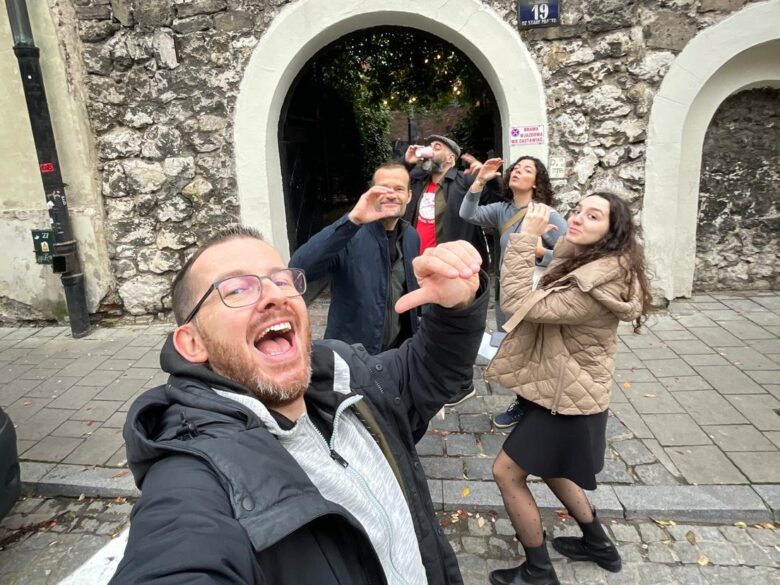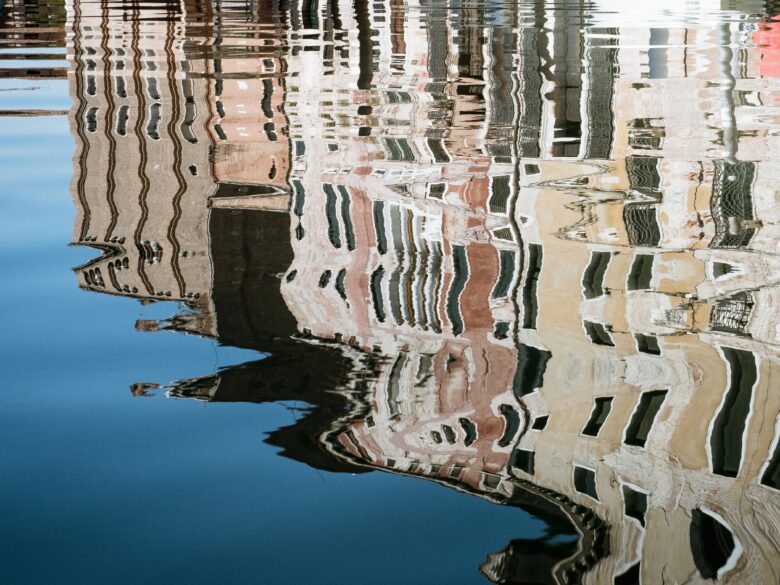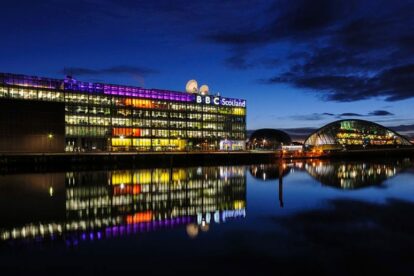
Broomielaw – by Robert Brown
If asked to think about Scotland and its highlights, what would be the first images to spring to mind? I feel confident in saying that most would see the Highlands and its lakes, the towering windswept cliffs overlooking the Northern Sea, lush national parks, and the unmistakable streets and castle of its capital Edinburgh. If we were presented with pictures portraying any of those places, most of us would find them familiar. But would we be equally prepared to identify, with certainty, the profile of Scotland’s largest centre, Glasgow?
Whatever the reply is, our itinerary through a more local Glasgow will try to unveil bits and pieces of what was once considered the ‘Second City of the British Empire.
What were the reasons that earned Glasgow the aforementioned title? Throughout most of the 19th and the first half of the 20th century, the city on the river Clyde was only rivaled by London in terms of industrial production and economic outcomes. Glasgow experimented an unprecedented growth as the Industrial Revolution kicked off at the beginning of the 19th century. An already thriving trading port, the city turned into a world-renowned manufacturing centre, its wealth mainly pivoting on the shipbuilding and engineering industry. Additionally, Glasgow was the second city of the empire to be equipped with a subway railway system (the third in the whole world after London and Budapest), and the second in terms of inhabitants (being among the first centres in Europe to reach a population of one million).
The importance achieved by Glasgow reflected on its rich cultural and artistic scenario. The city centre, arranged in a grid, saw the erection of grand private and public buildings, and the new campus of the University of Glasgow opened it doors in the West End. The city also hosted a number of international exhibitions, and was home to the Glasgow School – a circle of artists and architects who greatly contributed to the Art Nouveau movement and graced the city streets and museums with their innovative creations.
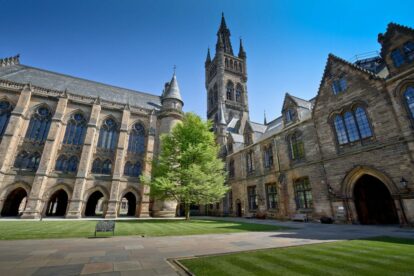
University of Glasgow West Quadrangle – by Michael D Beckwith
Despite relative changes of luck throughout the early 20th century, it was not until the 1960s that Glasgow entered a long period of economic downturn. As industrial productions shifted towards other parts of the globe, the progressive de-industrialisation caused a steep decline of the city’s population, and increasing poverty and unemployment. From the 80s onwards, a series of economic and cultural initiatives started instilling new life to the city. Nowadays the previously overlooked, sometimes even discarded, Glasgow has emerged as one of the most interesting urban realities in the whole United Kingdom.
Many British cities have managed, more or less successfully, to rise from their ashes and wipe out their reputation as symbols of post-industrial deprivation. On this matter Glasgow makes no exception: bold, cutting-edge architectural works have reshaped the riverfront, and its cultural and entertainment scene are arguably making it – once again – second only to London. However, few of those cities have managed to do so while staying true to their past. Glasgow is definitely one of them: although some areas stand as proof of a well-achieved urban renewal, Glasgow has overall retained a particular edginess and the typical roughness of a city with a strong and stark working-class tradition.
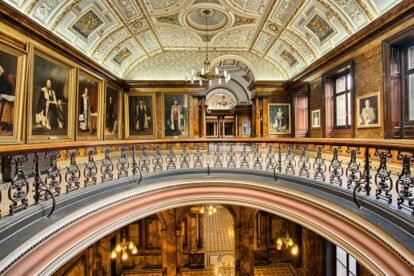
Inside Glasgow City Chambers – by Sebastian Ruff
Our Spotter Stuart reckons that Glasgow is a city of character. A character she admires.
Are you up for getting acquainted with such character as well? Here are a few suggestions for doing it the right way. As a local, of course.
Day 1: 09:00 – 13:00
Glasgow’s central eastern portion constitutes the district that is now named Merchant City (known as the area that was once home to the residences and warehouses of the city’s merchant “tobacco lords”), one of the trendiest areas in Glasgow. At its very heart, Merchant Square counts a number of boutiques, restaurants and bars. Finding a fine breakfast spot under the arches of this Victorian courtyard is no hard quest, but it is worth checking out a couple of other cafes, namely The Wee Guy’s and Once Upon A Tart. Head to the first if, while enjoying a pleasant experience, you want to check out some local photography: on the walls are professional pics of Scottish actors and film scenes. Otherwise Once Upon A Tart, as you can probably guess, is about delighting your palate with sweet treats; not only cakes and tarts, but also cookies and biscuits, porridge and pancakes.
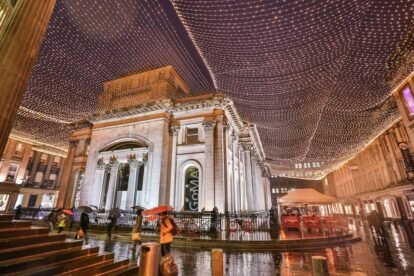
The Gallery of Modern Art (GoMA) – by Tony Webster
Burn up some calories walking around the area till you spot the front columns of the Neoclassical building that has been home to the GoMA – the Gallery of Modern Art, since 1996. Imposing from the outside and roomy inside, the GoMA offers some of the most interesting programmes in the British scenario. While large installations fit the spacey central gallery well, the upper floors expose the work – ranging from pictures and sculptures to video art – of both emerging and celebrated artists.
Day 1: 13:00 – 19:00
When hunger strikes and you’re walking the streets of the centre, don’t settle for a random place just because it’s on your way: search for Cafe Wander. It’s tucked down in a basement of an office in the financial centre. Take a glance at the local artists’ work hanging on its walls, while tasting one of their salads topped with the best ‘Little Doone’ sweet balsamic dressing, or one of their homemade slices of cakes. A couple of blocks to the north, Burger Meats Bun crafts excellent burgers using select ingredients – hence the short menu – as well as flavoursome milkshakes and house cocktails.
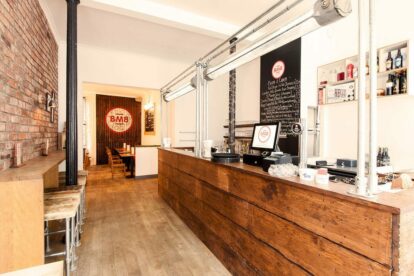
Burger Meats Bun – by Burger Meats Bun
The area features innumerable opportunities for spending a fully-exciting afternoon, such as a visit to the CCA (Centre for Contemporary Arts). The multi-purpose art centre has various rooms hosting a large number of events – exhibitions, talks, any sort of event, you name it – throughout the whole year. On top of that, the CCA features an excellent cafe and an art bookshop specialised in contemporary art. At a short distance, passed the M8 motorway that separates the centre of Glasgow from its northern neighbourhoods, the converted factories and warehouses of the Speirs Wharf make for a relaxing escape along the water.
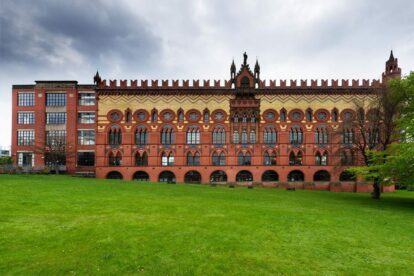
West Beer and the Templeton On The Green – by West Beer
Otherwise, Saturdays and Sundays are a good moment to go East and peruse the stalls of The Barras market, a famous Glaswegian institution dating back to the 1920s. Next door is the infamous Barrowland Ballroom, world-renowned and one of the best music venues of Glasgow. And when/if tiredness has kind of taken its toll on you, beers is what you might be in need of. Luckily for you, West Beer is dangerously close. The brewery/bar/restaurant is housed in the Templeton On The Green, a former 19th century carpet-factory on the edge of Glasgow Green with a design inspired by the Doge’s Palace in Venice. Debbie‘s suggestion is to enjoy West when the sun shines high in the Scottish skies: its beer garden is among the nicest and liveliest in town.
Day 1: 19:00 – 23:00
The socio-economic differences between affluent West End/working-class East End has not been a distinguished trait for London only: with rare exceptions, such contrast was, and still is, even sharper in Glasgow. Having said that, the East End is increasingly attracting investments and – whether we like it or not – gentrification is progressively taking over.
Along one of the arterial roads of the soon-to-be-upcoming district of Denninstoun – one of the few that has not been scarred by rather unappealing post-war reconstruction – is the hidden gem that goes under the name of Tibo. Located just 10 minutes away from the centre, the shabby-chic, down-to-earth bistro offers re-elaborated Scottish dishes (also vegetarian- and vegan-friendly) in an aesthetically pleasing interior. Nearby The Duchess of Duke Street makes for a nice option for after-dinner drinks; a local pub famous among residents, it often features local DJ nights.
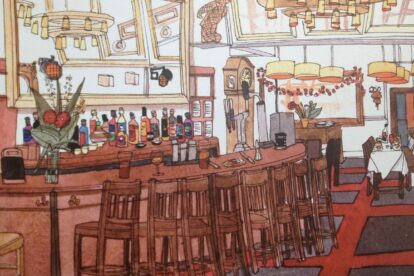
Guy’s – by Jennifer Clare
Staying west? Guy’s is the big brother of the previously cited The Wee Guy’s. The tiny space that hosts the restaurant (a former shop) is impeccable, carefully decorated down to the smallest details. The food? again Scottish cuisine: again with a twist, again awesome.
Close by is The 13th Note, the ideal place for a drink as well as for a music warm up. As a matter of fact, The 13th Note is one of the best independent music venues in Glasgow, catering to the most diverse audience. Alternatively, to the opposite side of the centre check out what’s on at King Tuts: in the past it has been named as ‘Best Live Venue’ by Radio 1, but to this day it still rocks Glasgow’s nights by showcasing new, alternative music talents.
Day 1: 23:00 – …
Glasgow music scene is one of the best (if not the best) in Britain – word of our Spotter Gill, who’s in the field and knows what she talking about. So why not give Renfrew Ferry a try? Now perpetually anchored to the banks of the Clyde river, what is the only floating restaurant in Glasgow is also a cool venue for gigs and DJ sets with a fascinating view over the Clyde and its southern banks.
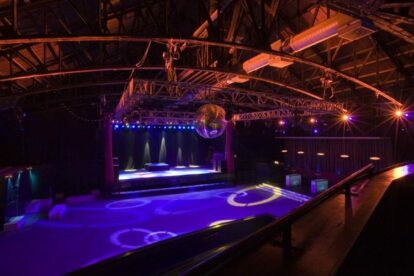
ABC – by O2 ABC
If floating on the water is not your cup of tea, then ABC and its eclectic programme will appeal to you; built as a film theatre back in the 1920s, the club has the biggest dance floor in the whole city and the largest rotating disco ball in the world (you read correctly: IN THE WORLD). Opened throughout the whole week except for Mondays, ABC hosts both live bands and themed DJ nights.
Day 2: 09:00 – 13:00
If you’re staying in Glasgow’s West End, you are not allowed to miss out on Tantrum Doughnuts. If you’re not in the area, then you should resist all of your cravings before making your way there. The brainchild of Iain Baille (former pastry chef at the three Michelin-star restaurant The Fat Duck), Tantrum Doughnuts is a flabbergasting experience through the most sophisticated, sweet variations of the fried pastry: pistachio crème brûlée, Mexican hot chocolate with coconut crumble and blueberry cheesecake crumble are just a few of the mouthwatering choices you will be presented with. Those who like it savory will find a tasty alternative in the breakfasts at An Clacha, where eggs are cooked in any possible way and the pudding is at its best.
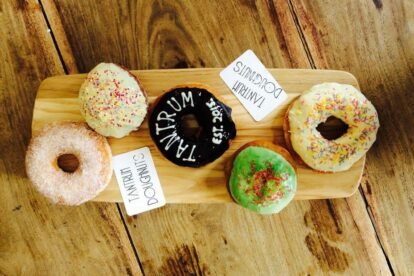
Tantrum Doughnuts – by Tantrum Doughnuts
The cafe is located at the eastern gate of Kelvingrove Park, a beautifully arranged green space created by famous English gardener Sir Joseph Paxton. Bisected by the River Kelvin, in the past it was the site of two international and one Scottish exhibition, which left behind marks such as monuments and, most notably, the Kelvingrove Art Gallery and Museum. The majestic red sandstone building, with a luxurious entrance overlooked by a massive pipe organ, displays one of the finest collections in the nation. Among the highlights; stuffed animals, medieval weapons, numerous artworks from world-renowned painters and a Spitfire plane hanging from the ceiling of the west court.
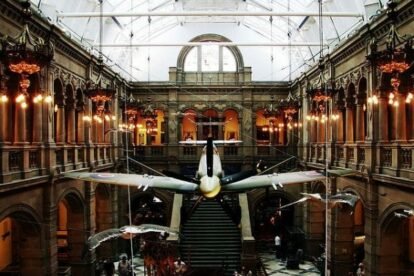
Kelvingrove Art Gallery and Museum – by Stuart Crawford
Day 2: 13:00 – 19:00
Byres Road is the upmarket main artery of the Hillhead district, in the bohemian-gone-glossy West End of Glasgow; Number 16 and Old Salty’s, two ideal spots for lunch, are found here. The first is a welcoming hide-away which has just been awarded the AA Rosette for Culinary excellence, and mainly focuses on Scottish themed dishes enriched by external culinary influences (primarily meat, but with some vegetarian options too). The latter is the place that has made our Spotter Scott rethink the quality of Scottish West Coast’s fish and chips. While some places can properly make one but not the other, or vice versa, Old Salty’s has mastered skillfully frying the two parts of one the most beloved English-originated dishes.
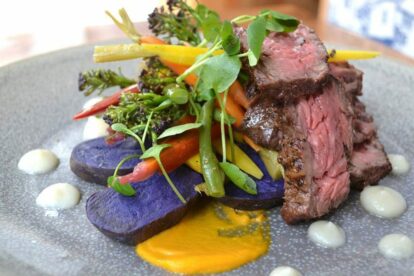
Number 16 – by Number 16
At a stone’s throw from there, lies the campus of The University of Glasgow, one of the most striking examples of Neo-Gothic revival architecture in the country. The occasions to scale the university tower are rare, but nevertheless it is always possible to admire the castle/Hogwarts-like beauty of the complex and pay a visit to the Hunterian Museum, the oldest museum in Scotland. The collection is distributed across a number of buildings and encompasses various institutions, showcasing the most diverse items and objects. Worth a mention are the insect collections of the Zoology Museum, the Mackintosh House and the Roman artifacts found in the excavations of the Antonine Wall.
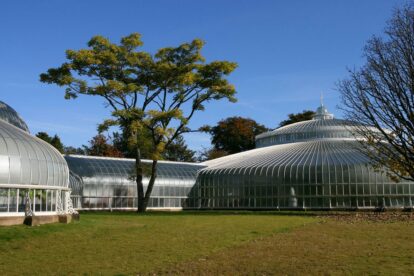
Kibble Palace – by hops_76
North of the university is Great Western road with its vintage shops and – for those not into the hustle and bustle – the peaceful haven that is the Botanic Gardens. The distinctive feature of the gardens are the several glasshouses that are dotted around, with the Kibble Palace as the pearl. Inside, a fish pond, exotic plants and a fascinating exhibition of carnivorous plants and rare cacti. Upon leaving the gardens (closing time is at dusk) keep in mind that one of the nearby cobbled streets hides Tchai Ovna. Relax here with excellent chai tea, listening to chill-out tunes in the Zen Room, and attend events such as jazz concerts and poetry readings.
Day 2: 19:00 – 23:00
A fundamental stop-over when in the West End, Ubiquitous Chip is one of the few venues in Glasgow with a covered and heated roof terrace – an asset much favourited by smokers, especially during wintertime. Aside from that, Ubiquitous Chip’s great menu and huge list of spirits make it a good place for starting your evening. Close to the Kelvin River, The Stravaigin is a local bar/restaurant preparing international dishes (it’s motto is ‘think global, eat local’) and fantastic cocktails.
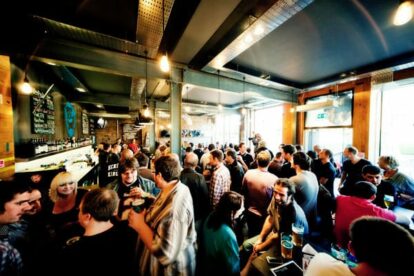
BrewDog – by Stuart Crawford
Fancy something other than cocktails? South of The Stravaigin on Argyle Street are BrewDog and Ben Nevis Pub.
The Aberdeenshire craft beer company BrewDog has opened its Glasgow namesake bar in front of the Kelvingrove Art Gallery and Museum, rapidly becoming one of the hot spots of the area. Order a pint of their flagship ale, Punk IPA, or try one of their beers on tap – on the pricey side, best is to go for their beer flights (four 1/3 beer samples at a discount price). In South Argyle Street, head to Ben Nevis Pub for a taste of the Highlands and the Islands in Glasgow! Behind the bar are hundreds of different whiskeys for you to try; Wednesdays are for live sessions of Scottish folk music, but it’s fairly possible the stony walls could echo with the sound of the bagpipes during the weekends too – spontaneous music happenings are quite common at the Ben Nevis.
Day 2: 23:00 – …
Back to the centre as the clock is ticking faster and your time in Glasgow is coming to an end. Once an exclusively
art-school-indie hotspot, Nice’n’Sleazy is now frequented by mostly any representative of every possible urban sub-culture. Down the flight of stairs is the dimly (sleazy?) lit dance floor and lovely (nice!) people dancing to the beat of the DJs.
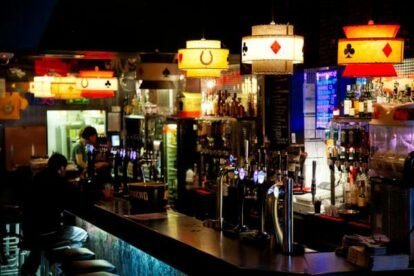
Nice’n’Sleazy – by Stuart Crawford
Facing Nice’n’Sleazy, The Garage is another notorious Glaswegian club; young students, sweaty bodies and an overly-thick air are part of the atmosphere of The Garage. Yet, don’t be fooled by such a brief and incomplete description: The Garage is also an important stage for the emergent Scottish wrestling scene, and throughout the years has hosted the performances of some of the biggest names in music.
More? Check our Glasgow blog or app!

![10 Unique Flea Markets in Europe [2024 Update!]](https://www.spottedbylocals.com/wp-content/uploads/midnightbazar-munich-by-ayla-amschlinger.jpg)
